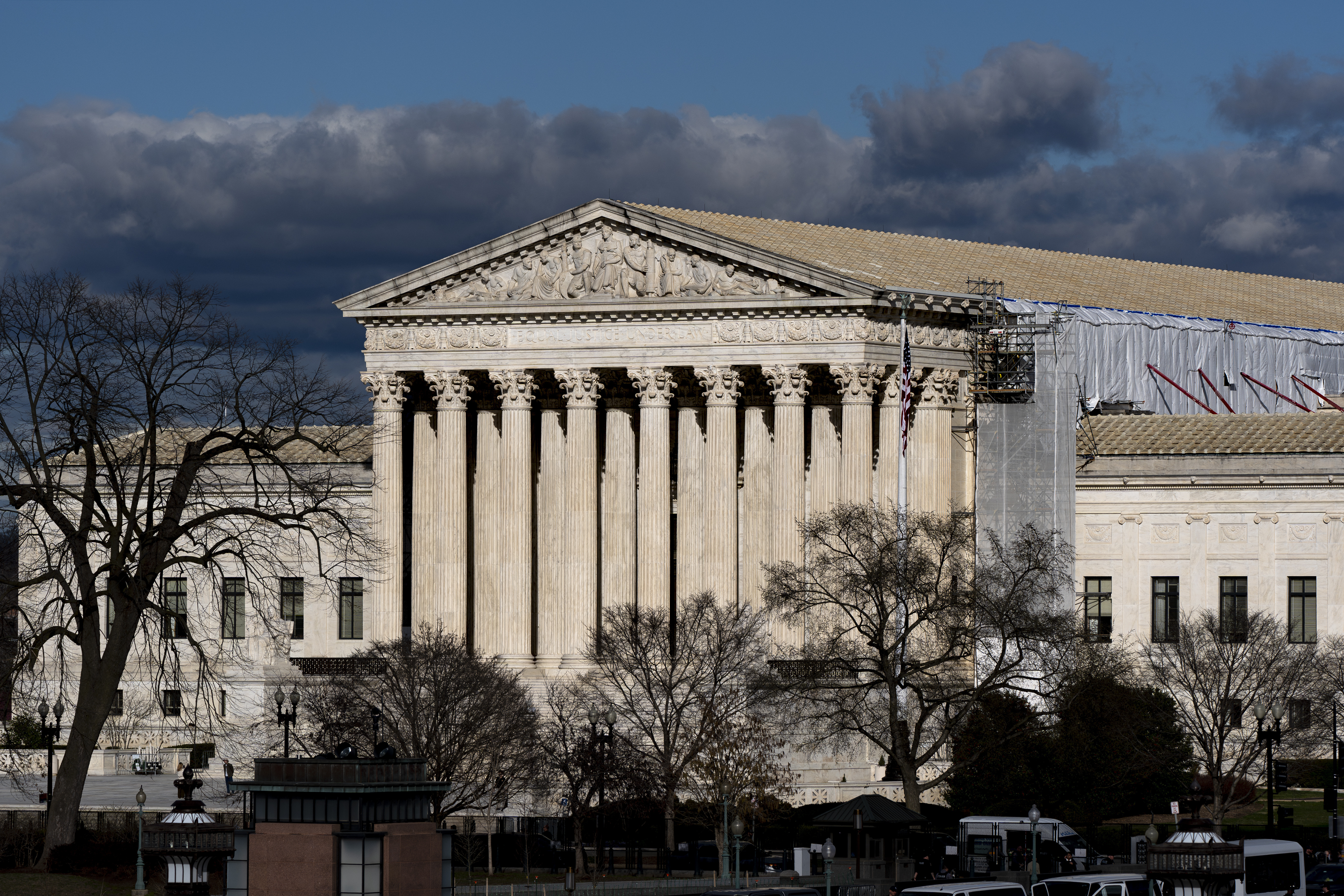
BILLINGS, Mont. (AP) — The Trump administration on Wednesday approved a right-of-way allowing the Keystone XL oil sands pipeline to be built across U.S. land, pushing the controversial $8 billion project closer to construction though court challenges still loom.
The approval signed by Interior Secretary David Bernhardt and obtained by The Associated Press covers 46 miles (74 kilometers) of the pipeline’s route across land in Montana that's controlled by the Bureau of Land Management and the U.S. Army Corps of Engineers, said Casey Hammond, assistant secretary of the Interior Department.
Those segments of federal land are a small fraction of the pipeline's 1,200-mile (1,930-kilometer) route, but the right-of-way was crucial for a project that's obtained all the needed permits at the state and local levels.
The pipeline would transport up to 830,000 barrels (35 million gallons) of crude oil daily from western Canada to terminals on the U.S. Gulf Coast.
Get Boston local news, weather forecasts, lifestyle and entertainment stories to your inbox. Sign up for NBC Boston’s newsletters.
Project sponsor TC Energy said in a court filing that it wants to begin construction on the U.S.-Canada border crossing in Montana in April. Opponents promised to challenge those plans in court.
First proposed in 2008, the pipeline has become emblematic of the tensions between economic development and curbing the fossil fuel emissions that are causing climate change. The Obama administration rejected it, but President Donald Trump revived it and has been a strong supporter.
The stretch approved Wednesday includes all federal land crossed by the line, Hammond said. Much of the rest of the route is across private land, for which TC Energy has been acquiring permissions to build on.
U.S. & World
Environmentalists and Native American tribes along the pipeline route say burning the tar sands oil will make climate change worse, and that the pipeline could break and spill oil into waterways like Montana's Missouri River. They have filed numerous lawsuits.
Hammond said Interior officials and other agencies have done a thorough review of the potential effects on the environment. He said TC Energy had provided detailed plans to respond to any spill.
“We’re comfortable with the analysis that’s been done,” Hammond said.
Another oil pipeline in TC Energy’s Keystone network in October spilled an estimated383,000 gallons (1.4 million liters)of oil in eastern North Dakota. Critics say a damaging spill from Keystone XL is inevitable given the length of the line and the many rivers and other waterways it would cross beneath.
An attorney for environmental groups that have sued to overturn Trump’s permit for the line said they will askthe judge in the caseto block the new approval.
“We have every confidence that the federal courts will set aside these approvals,” said Steve Volker, who represents the Indigenous Environmental Network.
Additional approvals from the Army Corps of Engineers are needed for the pipeline's impact to Montana's Fort Peck dam. Two utilities must approve power lines that would connect to the project's pumping stations.
On Montana's Fort Peck Reservation, where tribal members fear an oil spill getting into water supplies, state Sen. Frank Smith said Trump's strong support for the project appeared to be pushing it through.
“All we can do is pray from here on in,” Smith said. “The president said it's going through, and it's going through.”
The Democratic lawmaker added that despite TC Energy's pledge to operate safely, “there can still be human error” and another spill would happen.
TC Energy spokeswoman Sara Rabern said in a statement that the government approval marked an “important step as we advance towards building this important energy infrastructure project.”
In Phillips County, Montana, where the line would cross the Canada border into the U.S., officials want the tax revenue on the oil that would pass through, estimated at more than $1 million annually.
“It's a no-brainer for us as far as how the community feels," county commissioner John Carnahan said. “We'd go out there and help them if we could. It's not only good for the county, it's good for America.”
U.S. District Judge Brian Morris in Montana initially denied a request from environmentalists to block construction in December because no work was immediately planned. But he also has ruled against the project,including a 2018 decision that stalled the line and prompted Trump to issue a new presidential permit for it to cross the U.S.-Canada border.
In Nebraska, the state Supreme Court removed the last major obstacle for the project in August when it ruled in favor of state regulators who had approved a route for the pipeline in 2017.
TC Energy intends next month to begin mobilizing construction machinery to areas for worker camps and pipeline storage yards in Montana, South Dakota and Nebraska, according to its court filings. It also plans to start toppling trees along the route in parts of South Dakota.
___
Associated Press reporter Grant Schulte in Lincoln, Nebraska, contributed to this report.
___
Follow Matthew Brown at https://twitter.com/matthewbrownap



